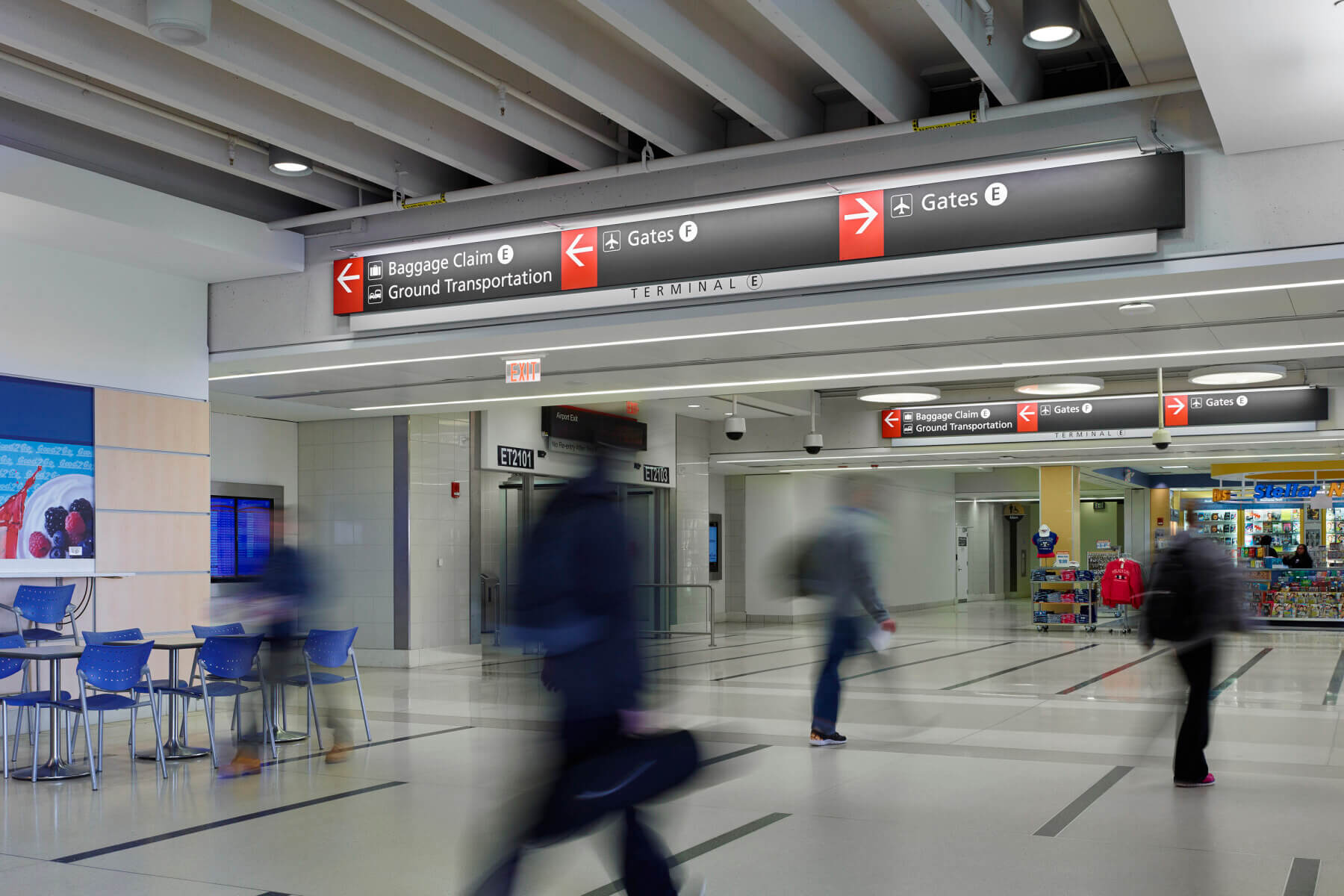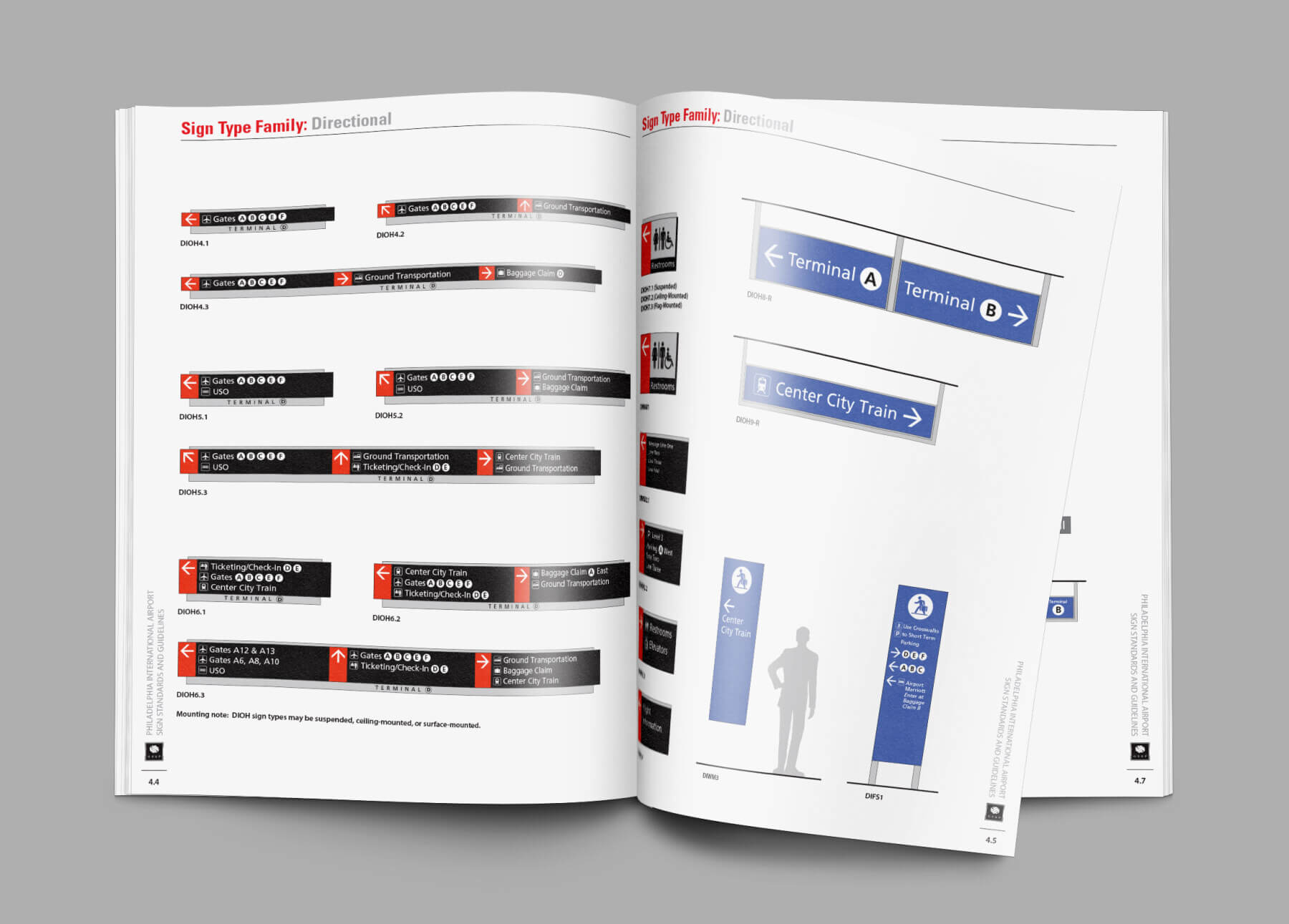We evaluated airport terminals, concourses, ticketing, bridges, baggage claims, curbsides and garages based on key wayfinding characteristics, including aesthetics, circulation, sign placement, messaging, symbols, terminology and safety. However, we also needed to make sense of the often non-intuitive circulation patterns at PHL. We ultimately catalogued each sign using GIS, creating a comprehensive signage inventory can be easily updated and incorporated into the airport’s GIS system so the airport can make updates in the future, without creating any gaps in wayfinding.

After the study, our team designed and implement a new sign standards program at PHL—one that features a clean, consistent look, and uses a clear wayfinding logic to help departing, arriving and connecting passengers navigate the often-maze-like circulation that is a hallmark of the airport’s physical layout.

We documented the new sign program in a Sign Standards and Guidelines manual. Aimed at helping airport staff plan and execute signage-related projects of all types, the manual contains sections on the basic wayfinding process and circulation analysis, visual and message hierarchies, sign placement, graphic standards, sign types, and guidance for sign management and maintenance policies and procedures. Designed for ease of use, it includes descriptive drawings and specifications for all sign types in the program, along with guidelines on when and how each sign type is intended to be used. The combination of the sign standards with the GIS sign inventory and database equips PHL with the necessary tools to perpetuate the integrity of the program.